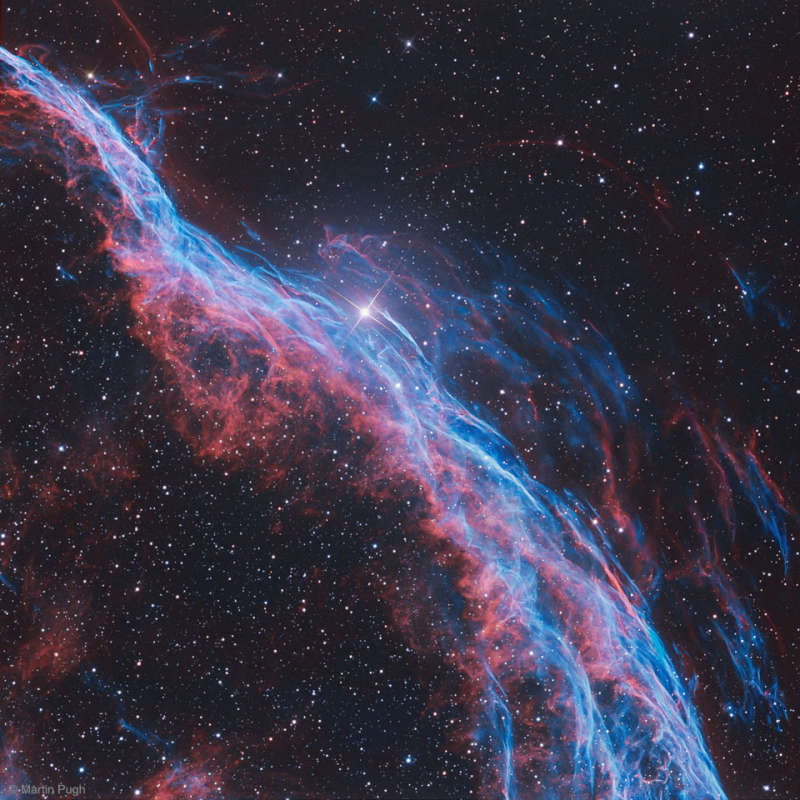
|
Credit & Copyright: Martin Pugh
(Heaven's Mirror Observatory)
Explanation:
Ten thousand years ago, before the dawn of recorded human history,
a new light would have suddenly have appeared in the
night sky and faded after a few weeks.
Today we know this light was from a
supernova,
or exploding star,
and record the expanding debris cloud as the
Veil Nebula, a
supernova remnant.
This sharp telescopic view is centered on a
western
segment of the
Veil Nebula cataloged as
NGC 6960 but less formally known as the Witch's Broom Nebula.
Blasted out in the cataclysmic explosion, the interstellar shock wave plows
through space sweeping up and exciting interstellar material.
Imaged with narrow band filters, the
glowing filaments are
like long ripples in a sheet seen almost edge on,
remarkably well separated into atomic hydrogen (red)
and oxygen (blue-green) gas.
The complete supernova remnant lies about 1400
light-years away towards the
constellation Cygnus.
This Witch's Broom actually spans about 35 light-years.
The bright star in the frame is
52 Cygni,
visible with the unaided eye from
a dark location but unrelated to the ancient supernova remnant.
|
January February March April May June July August September October November December |
| |||||||||||||||||||||||||||||||||||||||||||||||||||||||
NASA Web Site Statements, Warnings, and Disclaimers
NASA Official: Jay Norris. Specific rights apply.
A service of: LHEA at NASA / GSFC
& Michigan Tech. U.
Based on Astronomy Picture
Of the Day
Publications with keywords: NGC 6960 - Veil Nebula - supernova remnant
Publications with words: NGC 6960 - Veil Nebula - supernova remnant
See also:
- APOD: 2025 October 1 Á NGC 6960: The Witchs Broom Nebula
- APOD: 2025 June 9 Á Between Scylla and Charybdis: A Double Cosmic Discovery
- APOD: 2025 June 2 Á Veil Nebula: Wisps of an Ancient Supernova
- Supernova Remnant Cassiopeia A
- APOD: 2025 January 8 Á Supernova Remnants Big and Small
- APOD: 2024 September 18 Á The Mermaid Nebula Supernova Remnant
- APOD: 2024 September 4 Á NGC 6995: The Bat Nebula
